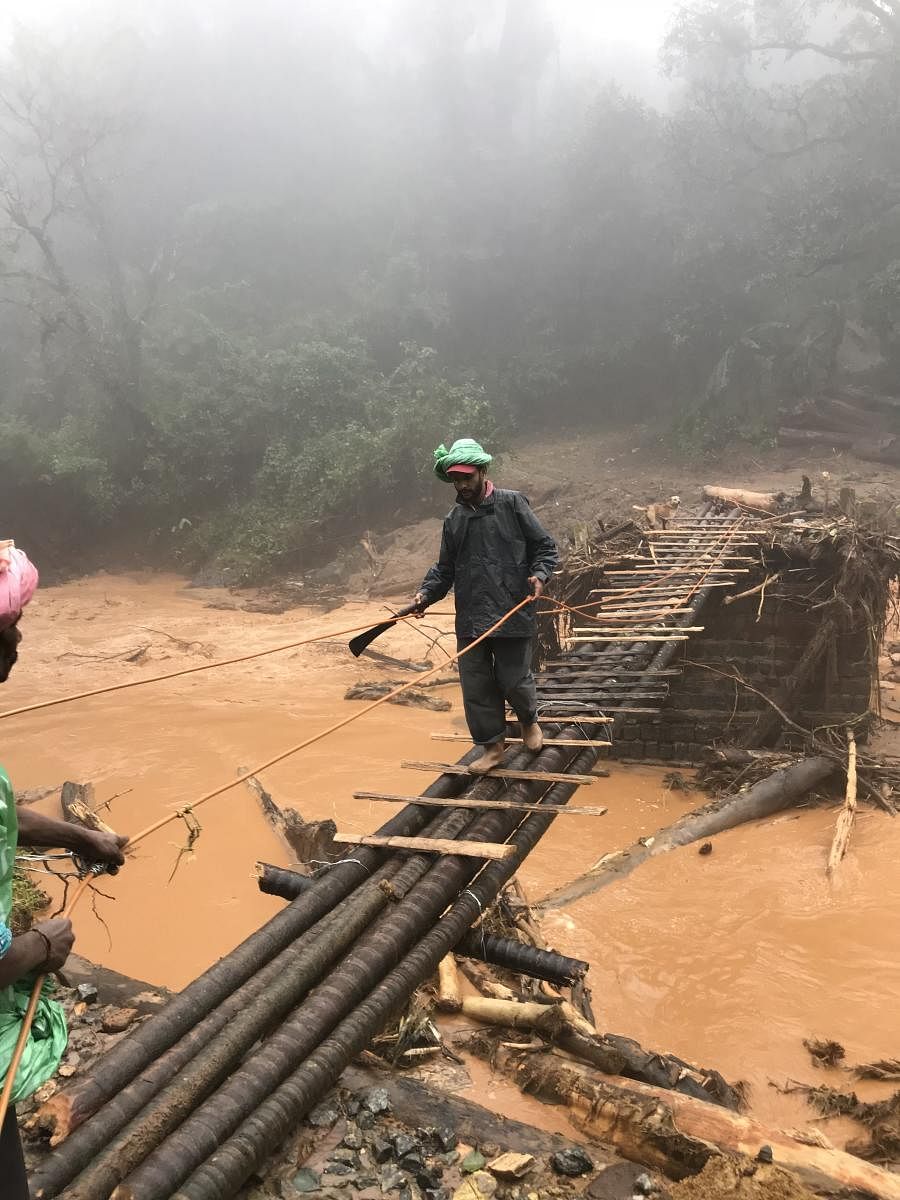
These are trying times in Kodagu. There is no doubt in anyone’s mind about Kodagu emerging stronger and healthier from the recent flood devastation. The district administration fared well in discharging its duties in the rescue and relief phase. Could it have done better? Certainly yes. We could verify this by scrutinising the most fundamental and critical plan document that anticipates, plans and guides the disaster rescue, relief and rehabilitation work in Kodagu. This is a 102-page document called Kodagu District Disaster Management Plan 2017-18 prepared by the Kodagu District Disaster Management Authority, that became available online as on October 10, 2018.
Chapter 4 of the plan covers prevention and mitigation measures for different situations like earthquake, flood, drought, fire and accidents in sufficient detail. But there is nothing on landslides, the major cause of the present situation, though there is a Landslide Zone Map
of the district at the end of the document, with seven vulnerable areas marked. Interestingly, the most affected villages, like Mokkodlu, do not appear in these areas.
Equally interesting is the National Disaster Management Authority’s Landslide Hazard Zonation Map that puts the entire Western Ghats in moderate to high hazard zone.
The document claims that community groups have been identified by the district administration in each village/ward to receive warnings, that community-level education and awareness programmes are conducted every month and that the identified section of the community has been involving warning, evacuation, search and rescue, first aid, management and relief/shelter teams. There is no record of these claims in the public domain. Are these claims true? Or has the matter of life and death become a cut-and-paste job in the document? This is a matter that needs closer scrutiny.
The Kodagu District Disaster Management Authority has two key teams, the District Disaster Management Team and the District Crisis Group, with eight and 29 members respectively. Among them, there is one elected representative representing the district’s 5.5 lakh population. Can a plan for the entire district be evolved without participation of elected representatives and people, without local knowledge?
The document goes on to say that the draft was put out in the public domain for inputs but doesn’t say where and when. The bane of our present system is this top-down approach, giving a damn to people’s collective wisdom. Unless it becomes a combination of bottom-up and top-down approaches, any programme is bound to fail.
Technology can play a key role in this process. Instead of restricting itself to a tick-the-boxes exercise by just saying technology can be used, an earnest attempt could have been made – for example, to build a web platform which documents the live status of each temporary shelter and its needs on a daily basis, by connecting via the smartphone of the officer in-charge. This real-time database could have served for better coordination with public and private donors and also as a credible base for rehabilitation purpose.
The rehabilitation phase is on now. Though it is close to two months since the disaster, we are yet to see even a draft rehabilitation plan. Recently, the local media was abuzz about constituting a grand committee to plan, coordinate and oversee the operations. The need is to strengthen the existing committee. Interestingly, even a few knowledgeable and concerned people had no knowledge of either the existing authority or its purpose. The longer the people are kept in the dark, the worse their misery. It is time to come together and work constructively and transparently. There is nothing to hide.
The government has initiated steps by inviting experts to find the causes and suggest appropriate infrastructure and technology for development. Infrastructure is only one part of the rehabilitation exercise. What does development mean to the people and specifically the affected in this context? Wouldn’t it be better if people are consulted and involved in defining and deciding what development is for them?
Participatory mode
The government must facilitate people to take charge of their own lives rather than it taking charge of them. It is necessary to discuss with each community before a plan is prepared. Each village needs its own specific plan, developed in a participatory mode. It is here that the Panchayat Raj system should take charge and be the anchor.
The process, place and time can be determined according to the situation. The Panchayat Development Officers of the Gram Panchayat thus have a key role to play in rebuilding Kodagu. Though it is debatable if they are trained and equipped on all fronts to deal with these kinds of situations, they remain the best bet under the present government setup at the ground level.
There are a few initiatives the government must take to strengthen the process of rebuilding. There are many sources of funds that are either coming in or are being proposed or promised. It is important that the district develops a fund flow centre that tracks all sources — central, state, local and private, from receipt to spending, putting specific details in the public domain.
This would allow people to monitor the works in their particular community, keep a tab on quality and prevent leakages. It is also important that an officer from each department is allotted to and held responsible for a community. They would have to coordinate with the Panchayat Development Officer from planning to delivery.
It is critical that a detailed and time-bound process document is provided to the team on the ground. If these basics are worked out well, the implementation will become manageable. As the saying goes, the devil is in the detail.
(The writer is a ground-level witness to the Kodagu devastation and the government’s response to it)